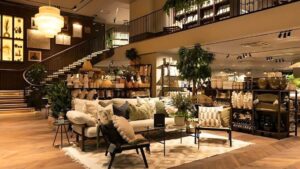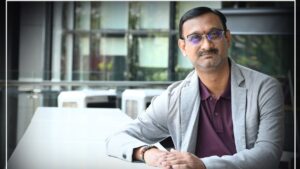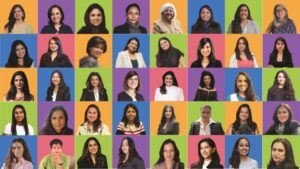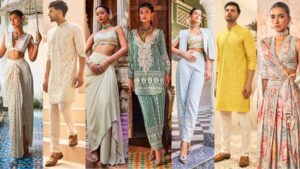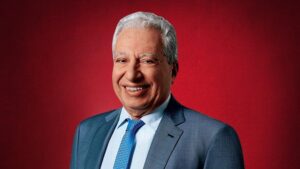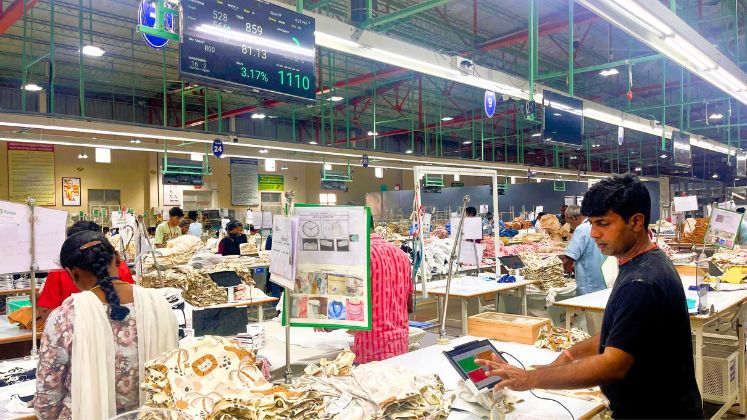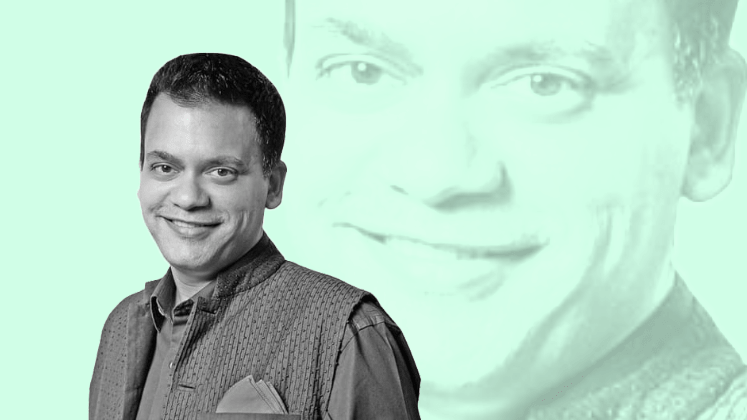
An alumnus of National Institute of Design (NID) and École Nationale Supérieure des Arts Décoratifs (E.N.S.A.D), Paris, Nachiket Barve started his career with the prestigious Gen Next platform at Lakmé Fashion Week, 13 years ago. Hailing from a family of doctors, Nachiket’s story is equal parts inspiring and relatable. From being oblivious to what a seam ripper is to going on to receiving the British Fashion Council and Elle magazine’s ‘Young Fashion Entrepreneur of the Year’ award, Nachiket has come a long way. Apparel Resources gets candid with the designer about his journey before and after NID, how he created his first collection, his take on the industry today, and what it takes to start a designer label in today’s day and age.
AR: Having studied at NID, did you always want to get into this area of design (fashion)? Or was it a shift you experienced during your college years?
NB: My background is a very non-fashion one; I come from a family of doctors, so I didn’t really have the exposure to fashion while growing up, but I always had this idea of creating something new. As a child, I was fascinated with textiles and colours, but at that point of time, not many people in India were doing fashion design on such a large scale. My parents asked me to get a degree and do something solid and in the meantime explore if this field (fashion) works out for me.
So I graduated in commerce, and post that, I applied at NID and NIFT. I got through both, but I ended up going to NID to study Apparel and Accessory Design.
AR: Having no prior experience in design, how was your post graduate journey at NID?
NB: At NID, all my batchmates came with prior experience in fashion design and art, having studied that for their graduation, but I was completely new to the experience. I remember on the first day, they (NID) gave us a list of tailoring supplies and I was taken by surprise since I had no idea what a seam ripper is or what a bobbin is. And the fact that I would have to stitch was quite a bolt from the blue, but I guess that’s how you become technically sound.
AR: That would have proved to be quite a challenge. How did you keep up with your classmates who came with some sort of prior training in design?
NB: I worked doubly hard. I practiced sewing every morning an extra hour before the class, spent every weekend – Saturdays and Sundays in the studio, worked really long, put up late hours and that’s how I got technically better. The education system heightens your aesthetic skills. And one day, I was selected across all disciplines to get a scholarship from the French Government to go and study at École Nationale Supérieure des Arts Décoratifs (E.N.S.A.D) in Paris.
AR: What were some of your earlier experiences in the industry before starting your own label?
NB: I did an internship with Celine – a part of the Louis Vuitton Group, and spent almost a year in Paris, after which I came back to do my final graduation project here. I also taught design at NID for six months, then I worked with a textile company for a year and then I applied for Gen Next at Lakmé Fashion Week. Since then, there has been no looking back. I remember it was something I read in the papers and I just applied. I was living in Delhi then. When I came to Mumbai, which is home, I didn’t know anything related to fashion here because I had never looked at Mumbai from a fashion sourcing point of view; so it was like completely rediscovering a new city.
“I didn’t have a workshop when I started out, so I created my entire Gen Next collection sitting in the workshop of one tailor master ji, which was a 10X6 sq. ft. sized room situated in the slums. I remember carrying dress forms over the bridge atop a naala just to reach his workshop, and I needed to go to a mall nearby every time I had to use a loo.”
AR: How was the Gen Next experience for you? How did you prepare for it?
NB: I didn’t have a workshop when I started out, so I created my entire collection for Gen Next sitting in the workshop of one tailor masterji, which was a 10X6 sq. ft. room situated in the slums. I remember carrying dress forms over the bridge atop a naala just to reach his workshop, and I needed to go to a mall nearby every time I had to use a loo. It was quite an adventure!
“I didn’t start in some swanky workshop with a whole workforce – it was really basic. Everything was very hands-on which definitely helps because it makes you very independent rather than being reliant on somebody else.”
For Gen Next, we made 10 garments and displayed them on a rack, and I knew nobody in the room but as things would have it, my first ever customer was Sonam Kapoor. Sonam’s mother had come for my show and she has a very keen eye. She loved the clothes and wanted to come in person to see them. I didn’t even have a studio back then. Sonam and her mom just came home to see a rack of those 10 garments and that’s when she placed an order for a few of my pieces.
It took me about three months to create my Gen Next collection. It wasn’t only about stitching 10 garments; it was an entire exercise of understanding the visual language, sampling, trying to find the resources for it, etc.
AR: What kind of skills can aspiring and upcoming designers keep in mind to excel in the field of fashion design in today’s competitive landscape?
NB: I think it’s important to know as many skills as you can along the way and keep growing with times. But I think it’s also important to have a unique point of view – be original and don’t try to be one amongst the herd. This is something that can only be discovered with practice. The more you do, the better you get. If you have clarity, that’s great. If not, then you have to explore various things and see whatever works best.
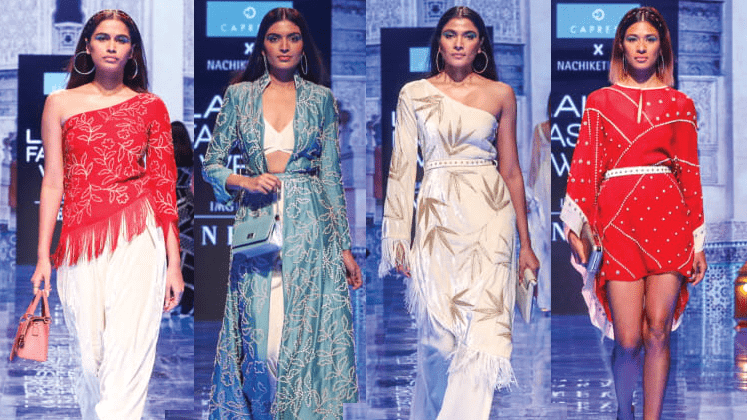 AR: What are some of the main materials/fabrics you work with? Are they outsourced or created by you or are a mix of both?
AR: What are some of the main materials/fabrics you work with? Are they outsourced or created by you or are a mix of both?
NB: We work with pure fabrics mostly, whether it is silk, cotton or wool or weaves like chanderi, or fabrics like georgette and chiffon, banarsi, organza, velvet. There are a lot of fabrics but the idea is to add value to fabrics with surface techniques and embellishments that we do.
We experiment a lot with weaving, dyeing, printing, bandhani, shibori, quilting, appliqué, cutwork, embroidery, beading, zardozi, etc. Depending on our design requirements, we do outsource some of our techniques to clusters/artisans in various parts of India that are known for them, for example, quilting in Bengal, weaving in Madhya Pradesh, etc.
AR: The fashion industry is constantly evolving and one sees trends change at the blink of an eye. How can a brand/label stand out in such a scenario and how do you rise to the competition?
NB: The idea is to get really good at what you do. Keep showing those things in an original way. People really need originality because otherwise everything looks like everything else. People are not buying fashion because they want something generic; they want something super special. So it’s important to know what you are good at, hone it further and then keep working on it.
AR: It takes a set amount of capital to start your own business but not everybody is blessed with the economic conditions to make that happen. What would your advice be to such aspiring individuals? How can they navigate through this?
NB: The key is to be sensible about business. You will need an ‘x’ amount of start-up capital because you cannot create stock out of nothing. So if you’re good with finance, then that works or else you can get an investor or a partner to back you up. You can also explore the ideas of a short-term informal loan but you have to have the sustaining power to survive yourself over a couple of seasons.
“People really need originality because otherwise everything looks like everything else. People are not buying fashion because they want something generic; they want something super special.”
Also if you are someone who doesn’t have the kind of backing to start big – start small. You could probably do a few exhibitions where your turnaround of cash is faster, rather than blocking with stores on consignment, or doing shows at fashion week which are very capital-intensive.
AR: When did you set up your own factory?
NB: I started small with my own set-up when I had seen market feedback, saw that stores were interested and that’s when we said to ourselves that we have a product which is commercial and would sell. I started out with two people – one did the patterns and cutting and the other one was involved in tailoring. Then slowly and surely, we grew which is how it should be.
AR: What, according to you, is more important for a brand – participation in fashion weeks, exhibitions or social media engagement?
NB: All three have their own pros and cons – it really depends on what your set of variables are and what works best for you. Social media to start with, since it’s free, then come exhibitions since they have a faster cash flow and you get immediate retail feedback, and fashion weeks come at a later stage.

